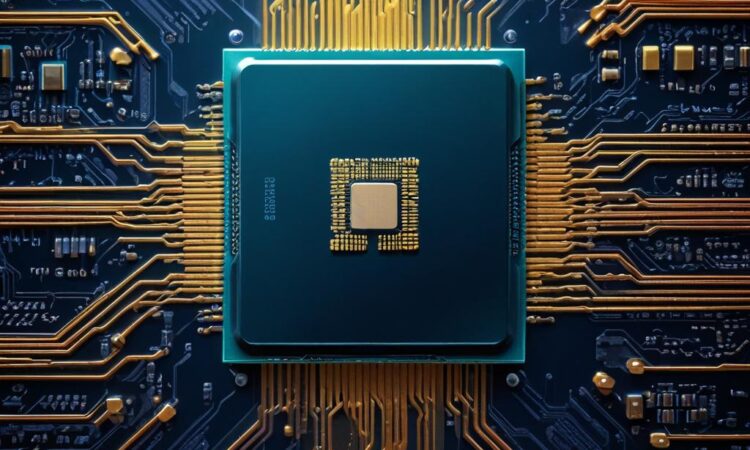Global Semiconductor Shortages Persist: Challenges and Solutions
Despite some easing, the global semiconductor shortage continues to disrupt supply chains and impact industries ranging from automotive to electronics. Recent announcements from major manufacturers highlight the ongoing challenges and the need for long-term solutions. This topic remains crucial for businesses relying on semiconductors, investors watching the chip market, and governments seeking to ensure national security in critical technologies.
The Ongoing Impact
The semiconductor shortage has had a profound impact on various sectors, leading to production delays, price hikes, and supply chain disruptions. The automotive industry, heavily reliant on semiconductors for vehicle electronics, has been particularly hard hit. The shortage has resulted in car production cuts, increased wait times, and higher prices.
The electronics industry, including consumer electronics like smartphones and computers, has also faced challenges. The shortage has led to delays in product releases, limited availability, and higher costs for electronics. The global supply chain has been disrupted, as manufacturers struggle to secure the necessary components.
Factors Contributing to the Shortage
Several factors have contributed to the ongoing semiconductor shortage, including:
- Increased demand: The pandemic-driven surge in demand for consumer electronics, coupled with the growing adoption of devices with advanced semiconductor requirements, has led to a significant increase in chip demand.
- Supply chain disruptions: Factory closures and production disruptions due to the pandemic have disrupted semiconductor production and logistics, creating bottlenecks in the supply chain.
- Geopolitical tensions: Trade disputes and sanctions, particularly involving China, have impacted semiconductor production and trade, further exacerbating the shortage.
- Limited production capacity: The semiconductor industry operates on long lead times, and expanding production capacity takes time and significant investments. The lack of sufficient capacity has hindered efforts to meet the surging demand.
- Natural disasters: Floods and other natural disasters in key semiconductor manufacturing regions have disrupted production and further aggravated the shortage.
Recent Developments and Announcements
Despite some easing, the semiconductor shortage remains a significant challenge. Recent announcements from major manufacturers highlight the ongoing challenges and the need for long-term solutions.
Intel Corporation, a leading semiconductor manufacturer, has announced plans to invest billions of dollars in expanding its manufacturing capacity in Europe and the United States. The company aims to bolster its production capabilities and reduce its reliance on external suppliers. This move signifies a commitment to addressing the shortage and ensuring future supply chain resilience.
Taiwan Semiconductor Manufacturing Company (TSMC), the world’s largest contract chipmaker, has also announced plans to invest heavily in expanding its production capacity. TSMC is building new fabrication plants in Arizona and Taiwan, aiming to increase its global chip production. This expansion will further bolster the industry’s supply chain and contribute to meeting the rising demand for semiconductors.
Samsung Electronics, another major chip manufacturer, has also announced plans to invest in expanding its semiconductor production facilities. The company is focusing on increasing its production of advanced chips, including those used in smartphones and data centers. These investments highlight the ongoing race to secure a dominant position in the semiconductor market.
Long-Term Solutions
Addressing the global semiconductor shortage requires a multifaceted approach, including:
- Increased investment in semiconductor manufacturing: Governments and companies need to invest heavily in expanding production capacity, particularly in advanced chip technologies.
- Strengthening supply chain resilience: Diversifying supply chains, reducing dependence on single suppliers, and improving logistics infrastructure are crucial for mitigating risks and disruptions.
- Government support and incentives: Governments can play a significant role in supporting semiconductor research and development, providing financial incentives for companies to invest in manufacturing, and creating a favorable regulatory environment.
- Collaboration and partnerships: Fostering partnerships between industry players, research institutions, and governments can accelerate innovation and drive technological advancements.
- Focus on sustainability: The semiconductor industry needs to prioritize sustainable practices, reducing its environmental footprint and ensuring responsible resource utilization.
Conclusion
The global semiconductor shortage remains a complex challenge with far-reaching implications. While some easing has been observed, the need for long-term solutions is more urgent than ever. Businesses, investors, and governments must collaborate to address the factors contributing to the shortage and build a more resilient and sustainable semiconductor industry.

